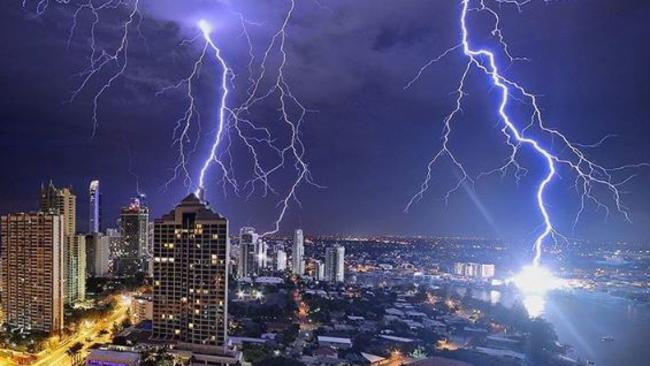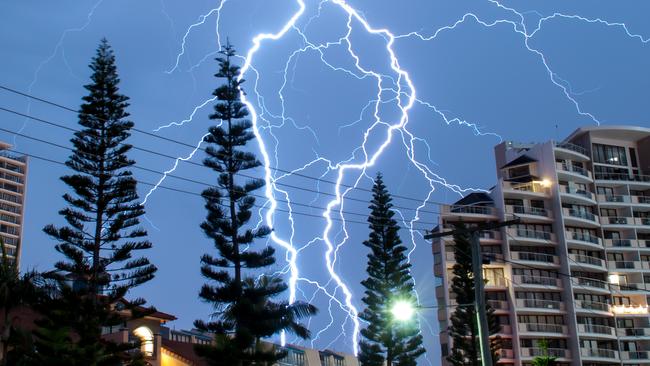Lightning strike rate is higher than you might think — here’s how to stay safe on the Gold Coast
YOU have a greater chance of being hit by lightning than winning Lotto. Statistics show the chance of being struck by lightning is one in 12,000 while the likelihood of winning Lotto first division is just one in more than eight million.
Gold Coast
Don't miss out on the headlines from Gold Coast. Followed categories will be added to My News.
YOU have a greater chance of being hit by lightning than winning Lotto.
Statistics show the chance of being struck by lightning is one in 12,000 while the likelihood of winning Lotto first division is just one in more than eight million.
However experts say you can reduce the chance of becoming a victim of lightning by taking steps to minimise your risk.
“If you can, take shelter indoors or inside a car,” BOM meteorologist Annabelle Ford said.
“It’s important to stay away from trees.
“Not only are they conductors but you don’t want to be hit by falling branches.”

The Australian Bureau of Statistics does not keep records of how many Australians are struck by lightning but according to reports, about 10 Australians die with another 100 people injured annually due to strikes.
“If you can’t get indoors, get as low to the ground as possible,” Ms Ford said.
“If you’re surrounded by taller buildings, umbrellas probably wouldn’t be a problem — you just don’t want to be the tallest object.”
Lightning can warm the air by 27,700 degrees, five times hotter than the surface of the sun and strike as far as 16km from a storm.

The longest lightning streak on record was in September in the US — it extended 321kms.
Lightning expert Grant Kirkby said the Gold Coast had a higher ground flash density (strike rate) than most cities due to its tropical climate.
He said the region had about a four strikes per square kilometre rate and about 40 to 60 thunder days per year.
“People have become complacent about the dangers of thunderstorms,” Mr Kirkby said.
“If you hear thunder or you see lightning, you are already at risk and should seek immediate shelter indoors.

“You don’t know where or when lightning will strike.
“Nowhere outside is safe during a thunderstorm.
“People don’t realise the real risk.”
Mr Kirkby said misconceptions about the risks of lightning were putting people in danger, including the risks associated with using electrical appliances at home during a storm and also showering or touching water.
Queensland Ambulance Service’s Gold Coast executive manager of operations Pat Berry said first responders dealt with lightning strike victims on a case-by-case basis, due to the multitude of injuries and symptoms with which they could present.
Mr Berry said it was a miracle a lightning strike at Helensvale on November 30 involving a traffic controller had not resulted in serious injury.
He said the woman in her 50s experienced palpitations and tingling in her arm after the lightning went up the sign she was holding.
Originally published as Lightning strike rate is higher than you might think — here’s how to stay safe on the Gold Coast


